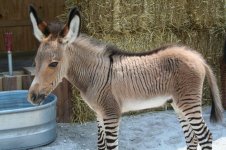Proposal
To define a definition of a pure corn that can be checked and regulated.
Reason for proposal
Whether or not a snake is a hybrid is obviously a very big deal for some people. At the moment, though, we have no way to check if a corn snake is completely pure. Who is to say that one of your snake's ancestors didn't breed with another species at some point, however many generations ago? What do we even define as a hybrid? Is a snake a hybrid even if the last hybridization was 500 generations ago? What makes a corn pure? Note that this proposal was mainly sparked by a discussion we had on a facebook group - personally, I have no known hybrids nor do I intend to ever sell known hybrids as pure.
What will this proposal accomplish?
Hopefully, we will be able to eliminate some of the uncertainty people seem to have when buying from certain breeders. People will be able to say they sell pure corns and will be able to back it up with actual data instead of having people have to take their word for it. Snakes with a proven "pure" lineage might make the seller some more money and people who are completely against breeding hybrids will be able to buy only pure corns. This should entice people to register their snakes, giving us better insight in lineage.
What we need to do to make this work
1) Set a definition for pure corn snakes. To do this, we could look at the definitions of pure species / breeds that are currently in use. For most species or breeds, the definitions are along the lines of "If animal x has only been bred to pure animals of the same species/breed for y generations and displays a, b and c traits, the animal is regarded as pure". For the rest of this proposal, I'll use this definition.
2) Determine how many generations would eliminate a significant part of any hybrid influence a snake might have and make it virtually indistinguishable from "pure" corns.
3) Determine what we consider to be "pure" traits and decide how many of these a corn should display to be considered pure (if all the traits were required, we could never introduce any new morph, for instance, if we included known patterns as a trait, the tessera morph could never have been considered pure)
4) Assume that all snakes of which we don't know if they have had other species / hybrids in their lineage and that match the traits decided in step 3 are not hybrids. We need a base to start off with - as we cannot prove or disprove whether or not snakes had any hybridization in their lineage, we'll have to start this based off an assumption.
5) Have a world-wide database where people can enter their breeding data (snake id, parents, genetics, traits, etc.) to create an overview of the lineage of all snakes from the moment the database is opened.
I realize that this would take years upon years upon years to set up, but judging from all the discussions regarding morphs and people questioning their purity, this is a big deal for many people.
I'd love to hear what you guys think of setting up such a definition / database (I'm aware that some of these are already in use, although I haven't yet heard of a global one). If enough people agree, I hope we can set up a definition together using all the combined knowledge of any corn snake keeper who wishes to share it


